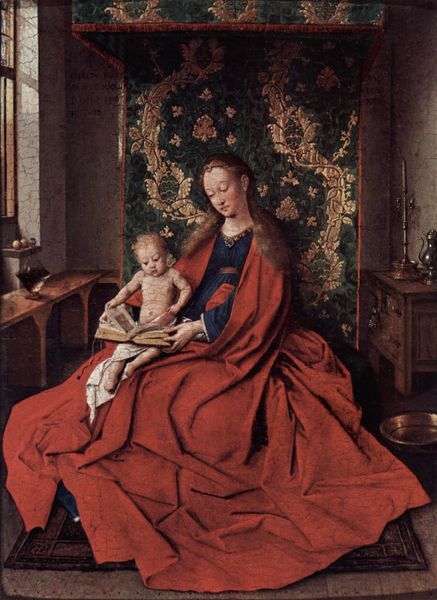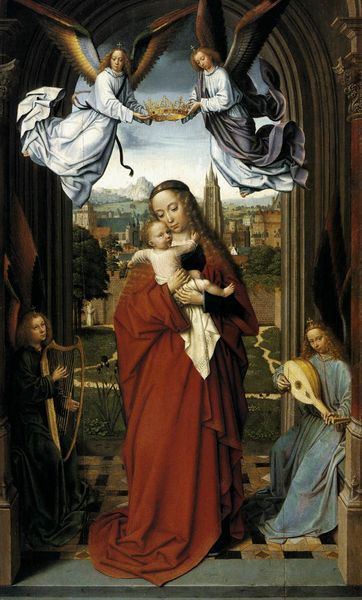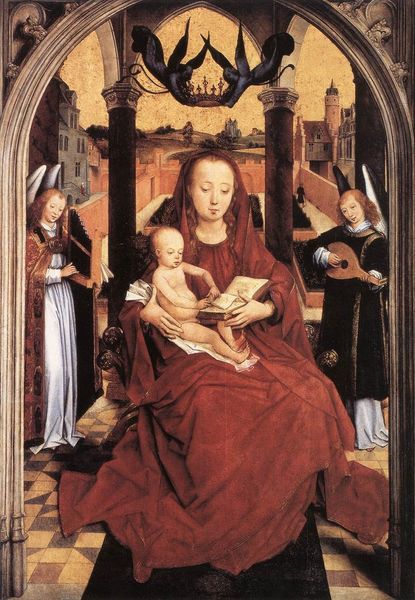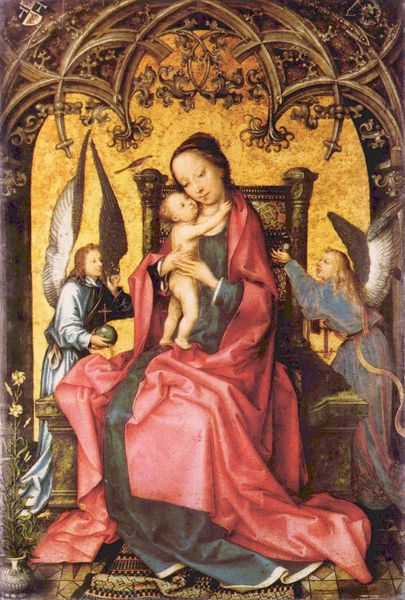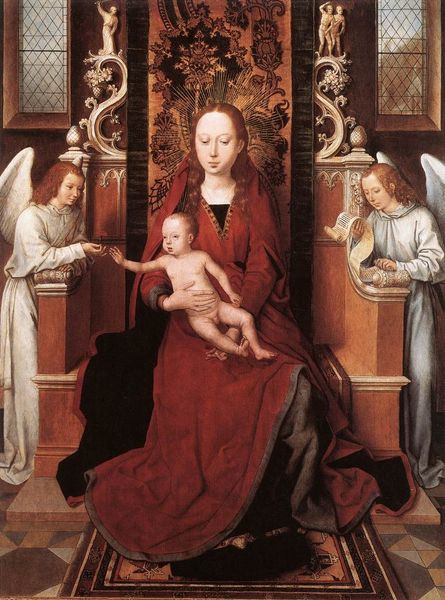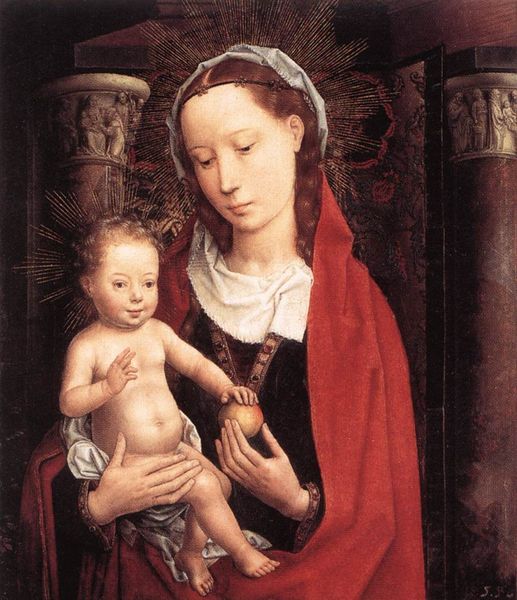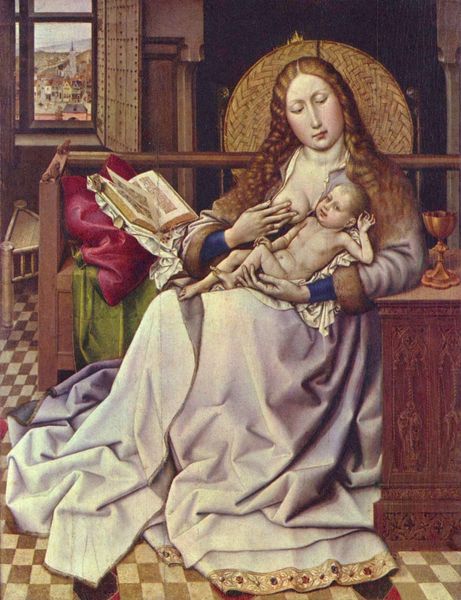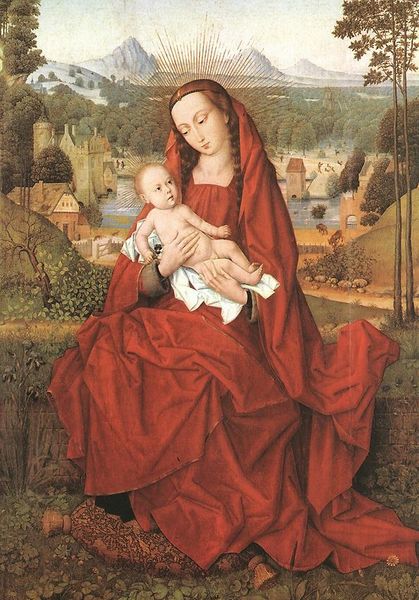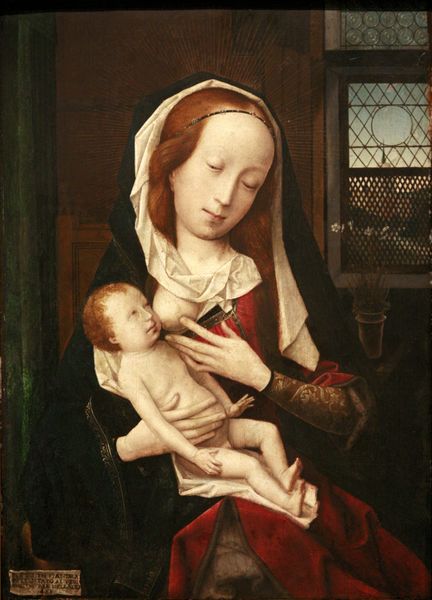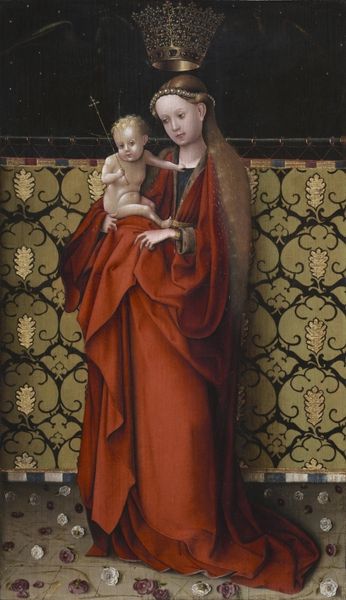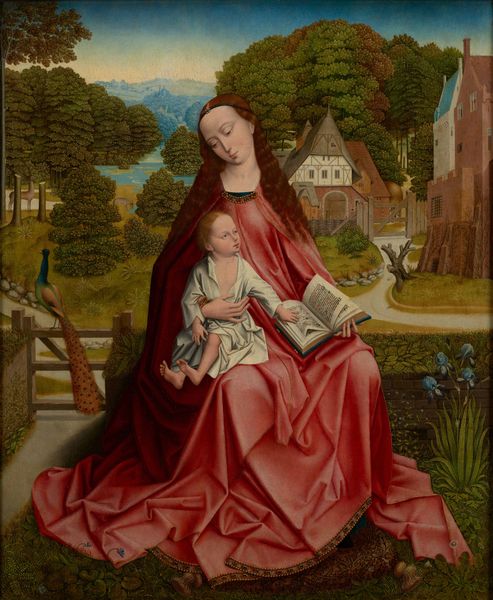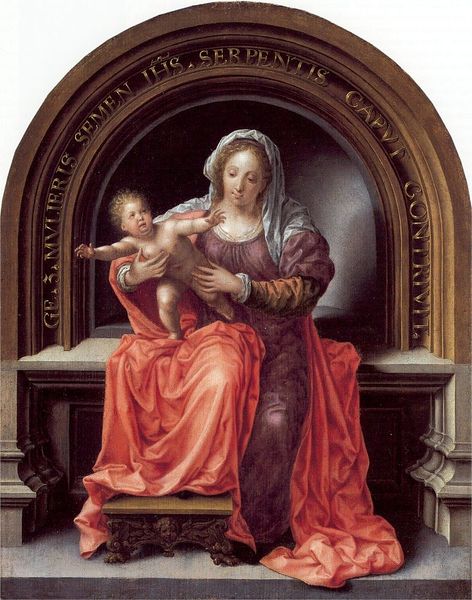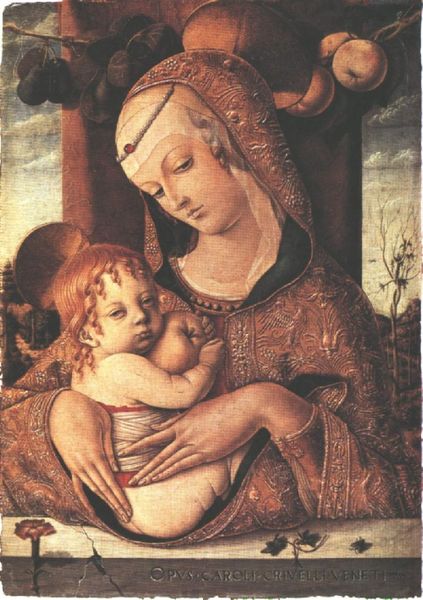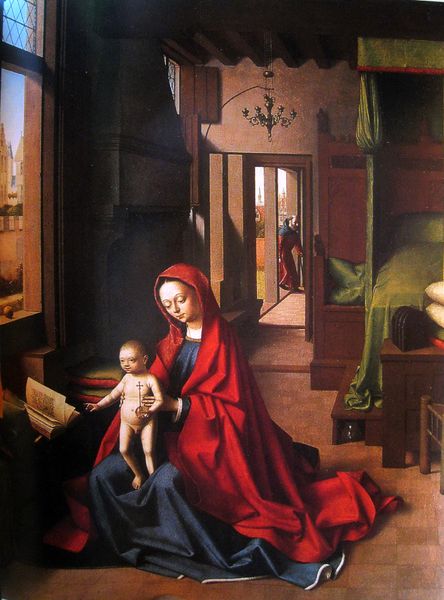
painting, oil-paint
#
portrait
#
narrative-art
#
painting
#
oil-paint
#
figuration
#
child
#
christianity
#
northern-renaissance
#
lady
#
early-renaissance
#
miniature
Copyright: Public domain
Curator: Here we have Jan van Eyck’s “The Lucca Madonna,” an oil on panel painting from 1436 currently residing at the Städelsches Kunstinstitut in Frankfurt. Editor: The most striking thing is the texture of that red fabric. It dominates the composition. Curator: The materiality is key. Van Eyck’s mastery of oil paint allowed him to capture the sheen and weight of that luxurious textile, a focal point that elevates the Madonna from a simple depiction of motherhood to a statement of wealth and status. Editor: The way the light drapes and folds across the figure is really captivating, drawing the eye towards the tenderness of the Madonna and child. The semiotics here are fascinating. Red, a colour of martyrdom, cloaks the virgin while drawing focus to the life-giving nourishment that flows from her, binding these visual queues tightly together. Curator: Exactly. And it's not just about the colour. Consider the access to such a vibrant pigment. Who commissioned this piece, and what does it tell us about the economic forces at play during the Early Renaissance? The miniature scale too points towards private devotion and likely a wealthy patron from the emerging merchant class who aimed to make clear links between prosperity, labor, and the divine. Editor: The space feels simultaneously intimate and expansive, which heightens the psychological impact of the Madonna’s gaze. She exists both within reach, nurturing, and ethereally distant, unburdened by reality, yet it is achieved via very careful layering, depth, and the specific texture of the textiles represented here. Curator: The setting, the props—even the light—all were carefully selected to highlight specific socio-economic circumstances. And, looking at the state of art production at the time, considering where his pigments come from, and the social role Van Eyck occupies, this miniature provides a window into 15th-century power dynamics. Editor: Seeing the piece through this lends such weight to it. There’s so much to appreciate in Van Eyck’s detail and the interplay of color and form. It truly opens new avenues for thought. Curator: Precisely, viewing artistic output within historical constraints grants richer appreciation.
Comments
No comments
Be the first to comment and join the conversation on the ultimate creative platform.
